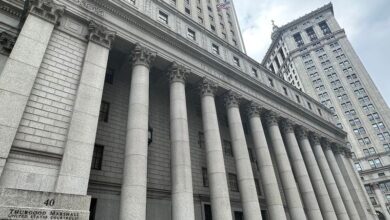The Week Ahead: Forex Markets Brace for Volatility Amidst Monetary Policy Uncertainty

Highlights
- ECB and Fed Monetary Policy Meeting Minutes in Focus.
- Preliminary private sector PMIs for February will influence central bank policy goals on Thursday.
- China reopens after the Chinese New Year holidays, with Beijing and the PBoC under the spotlight.
The US Dollar
On Wednesday, the FOMC Meeting Minutes warrant investor attention. Recent economic indicators have sent mixed signals to the markets and the Fed. The Meeting Minutes could reinforce areas of focus, enabling the markets to recalibrate bets on an H1 Fed rate cut.
Jobless claims and private sector PMI numbers will garner investor interest on Thursday. The Services PMI will likely have more impact, accounting for more than 70% of the US economy. A pickup in service sector activity could reduce bets on an H1 2024 Fed rate cut. However, jobless claims also need consideration. An unexpected spike in jobless claims could spook the markets and bets on a no-landing.
Beyond the numbers, investors must monitor FOMC member speeches. FOMC members Raphael Bostic (Wed), Michelle Bowman (Wed), and Christopher Waller (Fri) are on the calendar to speak.
Forward guidance on the economic outlook, inflation, and the Fed rate path would move the dial.
The EUR
On Wednesday, flash consumer confidence figures for the Eurozone will garner investor interest. An unexpected slide in confidence could impact buyer demand for the EUR/USD.
However, preliminary private sector PMIs for France, Germany, and the Eurozone will likely impact the EUR/USD more on Thursday.
The services sector accounts for over 60% of the Eurozone economy, giving the Services PMI more weighting. However, investors must consider sub-components, including prices and employment. Upward price trends could leave the ECB in a monetary policy holding pattern over the near term.
Eurozone inflation numbers for January also need consideration on Thursday. Inflation remains the focal point for the ECB vis-à-vis interest rate goals.
On Friday, the German economy will be under the spotlight. Q4 GDP and business sentiment figures could move the dial. Downward revisions to preliminary German GDP figures and weaker business sentiment could raise fears of a prolonged economic recession.
Beyond the numbers, the ECB will also be under the spotlight. The ECB Monetary Policy Meeting Minutes will garner investor attention on Thursday. Agreement to delay discussions about interest cuts would drive buyer demand for the EUR. The January ECB Consumer Expectations Survey results may also influence EUR/USD trends on Friday.
However, investors must track ECB commentary. ECB President Christine Lagarde is on the calendar to speak on Friday. Executive Board members Edouard Fernandez-Bollo (Wed/Thurs), Anneli Tuominen (Wed/Thurs), Isabel Schnabel (Fri), and Kerstin af Jochnick (Fri) will also deliver speeches.
The Pound
On Thursday, UK preliminary private sector PMIs for February will put the Pound in focus. The UK Services PMI will impact the Pound more, with services accounting for over 70% of the UK economy.
However, Bank of England commentary could also move the dial. Monetary Policy Committee member Swati Dhingra is on the calendar to speak on Wednesday. Recent UK economic indicators sent mixed messages to the Bank of England. Tighter labor market conditions and a jump in retail sales offset softer UK inflation data.
The Loonie
On Tuesday, inflation figures for January warrant investor attention. Hotter-than-expected inflation numbers could influence the timeline for a Bank of Canada interest rate cut and the Loonie.
However, retail sales figures will also need consideration on Thursday. The Bank of Canada remains mindful of demand-driven inflation. Downward trends in retail sales could enable the BoC to begin discussions on interest rate cuts.
Other stats include RMPI and wholesale sales figures. However, the focus will likely be on the inflation and retail sales reports.
From elsewhere, weekly crude oil inventory numbers from the US and stimulus chatter from China could influence sentiment toward supply and demand.
The Australian Dollar
On Tuesday, the RBA Meeting Minutes put the Aussie dollar under the spotlight. The RBA Press Conference and Rate Statement left a rate hike on the table. Hawkish comments could influence near-term trends for the Aussie dollar as investors await the next set of inflation reports.
Wage growth figures for Q4 will garner investor interest on Wednesday. An unexpected pickup in wage growth could signal an upward trend in consumer spending and fuel driven-demand inflation.
On Friday, private sector PMIs for February will wrap up an important week for the Australian dollar.
From elsewhere, stimulus chatter from Beijing and PBoC policy moves could also move the dial.
The Kiwi Dollar
On Wednesday, inflation will be in focus. Producer input prices for Q4 will influence the appetite for the Kiwi dollar. Softer-than-expected input prices could reduce bets on an RBNZ interest rate hike. New Zealand inflation is a primary concern for the RBNZ, leading to expectations of Q1 2024 rate hikes.
On Friday, retail sales will wrap up an important week for the Kiwi dollar. Upward trends in consumer spending could fuel demand-driven inflation and may corner the RBNZ into a rate hike.
The Japanese Yen
On Monday, core machinery orders need consideration. After falling into a technical recession in Q4, a pickup in demand could influence the Japanese Yen. Despite a technical recession, bets on an April Bank of Japan pivot from negative rates linger. A deteriorating macroeconomic environment could force the BoJ to adjust the timeline for exiting negative rates.
Trade data and private sector PMIs will also garner investor interest on Wednesday and Thursday.
Beyond the economic data, investors must consider Bank of Japan commentary throughout the week. A commitment to exit negative rates in H1 2024 could drive buyer demand for the Yen.
Out of China
The PBoC will be under the spotlight. On Tuesday, the PBoC will set 1-year and 5-year loan prime rates. Rate cuts would likely drive demand for riskier assets.
With the Chinese markets reopening after the Chinese New Year holidays, stimulus chatter from Beijing also needs consideration.



